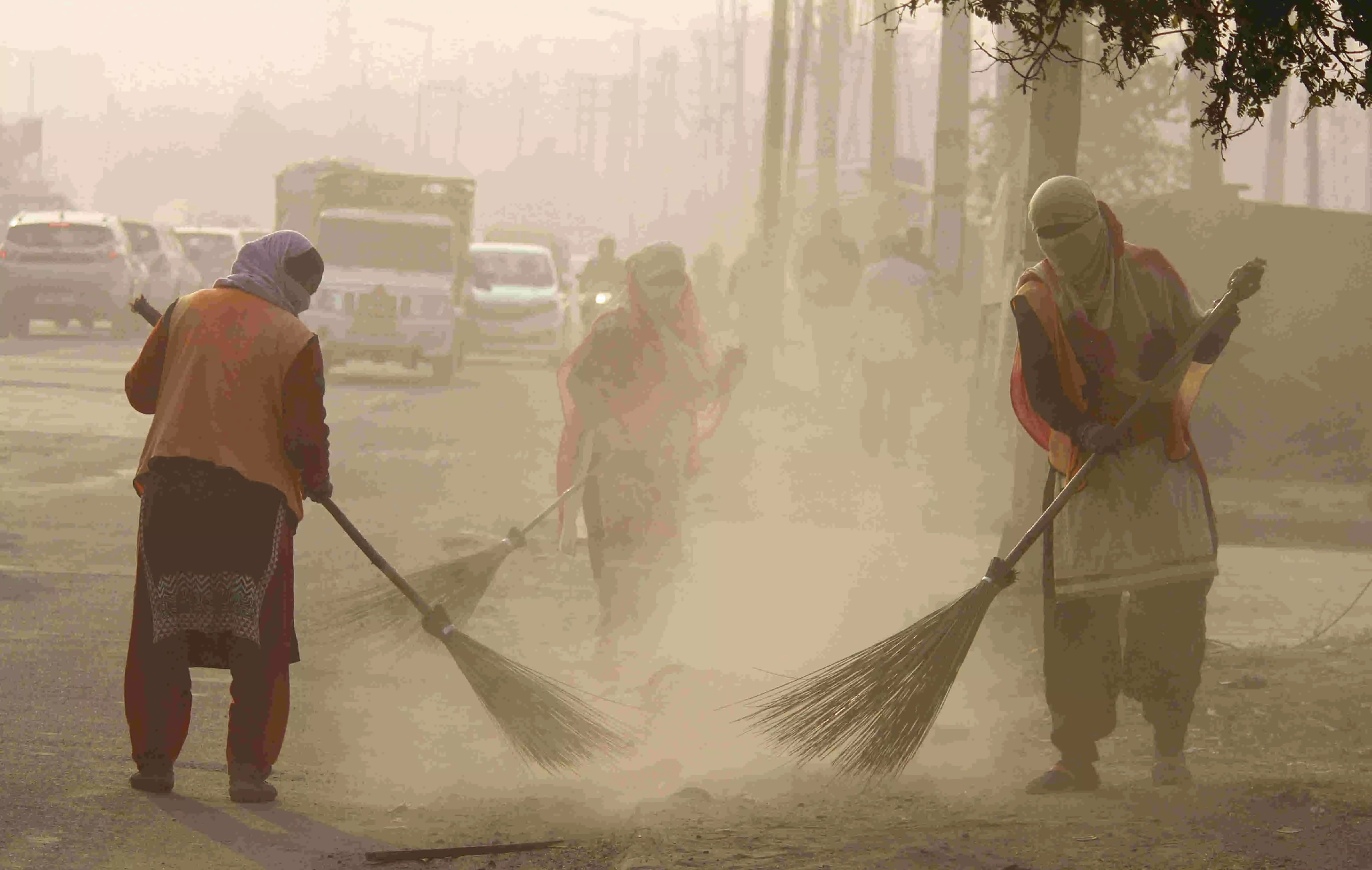Choking on smog
Delhi's alarming air pollution—exacerbated by vehicular emissions, construction dust, tree felling, and garbage burning—is a manifestation of administrative neglect, mismanagement, and unaccountability

Lord Hanuman Ji must be extremely unhappy with Delhi these days—and understandably so. As a devoted son, he is undoubtedly worried about the poor health conditions of his father, Shree Pawan Ji, along with the lakhs of his followers who are also suffering due to the ‘SEVERE’ levels of pollution in the air across the National Capital Region of Delhi. Everyone is choking and unable to breathe properly, suffering from respiratory diseases caused by these poisonous atmospheric conditions. Meanwhile, there appears to be no accountability from anyone or any agency responsible for the prevailing condition.
On a serious note, the deteriorating conditions are man-made and can be addressed with a little sincerity and effort—which, unfortunately, is missing. No one seems to care or bother anymore. The media, including social media, diligently flags the issue, but no one pays the necessary attention. The judiciary has also taken the matter seriously, reprimanding the administration about the worsening air quality and law and order situation. However, it remains helpless in ensuring proper steps are taken to provide clean air for Delhi's residents, in addition to improving law and order.
Children and the elderly are the most vulnerable to the dangerously high AQI levels, now reaching 500, while a level below 100 is desirable. Several schools have shut down and children are asked to stay indoors. Delhi today is one of the most polluted cities in the world.
While many factors contribute to this crisis, the burning of crop residue (‘parali’) often becomes the scapegoat. Other significant causes include:
1. Vehicular emissions: The sheer number of vehicles on Delhi-NCR roads is one of the primary causes of pollution. Despite this, thousands of new vehicles are registered daily. Authorities need to be cautious and regulate new registrations. Compounding this issue is the problem of traffic congestion. The lack of adequate parking spaces leads to vehicles being parked on arterial and colony roads, leaving these roads perpetually blocked. This creates hazardous conditions for pedestrians, who are forced to walk on the roads, risking their lives. Most footpaths in Delhi have been taken over for commercial activities or parking, making them inaccessible to pedestrians.
2. Construction pollution: Massive, ongoing construction activities in the NCT of Delhi significantly worsen air quality. Surveys reveal that thousands of buildings are brought down and rebuilt at any given time, often to accommodate increased Floor Area Ratios (FAR). This adds to the population density, bringing more vehicles and increasing the demand for electricity and water.
The free water and electricity schemes for BPL (Below Poverty Line) categories, announced by political parties for electoral gains, have also triggered migration from rural areas to Delhi. While these schemes promise a better quality of life, improved amenities, and financial opportunities, they push its AQI to dangerously hazardous levels.
Officials of the Municipal Corporation of Delhi work in their zonal silos, without considering the entirety of the problem. Oblivious to the larger impact, they continue granting permissions and approving plans to demolish single- or double-story houses in the zone to rebuild four-story houses with basements. Senior officers, too, pay little heed to this issue and remain lackadaisical for reasons best known to them. Sporadic moratoriums, which were previously issued for specific time periods to halt construction, are now a thing of the past.
c) Reduction in green cover: The rampant felling of trees in the name of progress is another major factor contributing to the deteriorating AQI in Delhi. It is often said that Delhi can remain a liveable city as long as its river and ridge are protected. Alas, both are now rapidly declining. Rivers in India have been worshipped since time immemorial, as they are lifelines for humans and all living beings. Sadly, the Yamuna River is being destroyed with impunity, its vitality severely compromised.
Similarly, Delhi's ridges are under constant threat. Rampant illegal encroachments and construction activities have already destroyed significant portions. At this rate, within a few more years, they could be entirely gone. Once this happens, Delhi will cease to be a liveable place, and life itself will become unsustainable.
d) Garbage burning: Garbage burning is another significant contributor to increasing pollution in the NCT of Delhi. Of late, there has been a growing tendency among municipal workers and contractors responsible for garbage disposal to burn portions of the daily waste collected. This practice is especially prevalent in the eastern and outer districts of the city, where smoke from burning garbage is a common sight.
Plastic, in various forms, is frequently present in the garbage, and its combustion releases highly toxic and hazardous chemicals into the air, endangering human health. Delhi generates about 12,000 tons of garbage daily, of which disposal facilities exist for only about 5,000 tons. The remaining waste is often stockpiled, awaiting proper disposal. Authorities must urgently adopt suitable methods to address this issue and prevent further harm caused by the reckless burning of waste.
It is no wonder Lord Hanuman is worried to witness such dreadful, immature actions and the self-destructive behaviour of his people in this part of the world. He must be desiring for good sense to prevail and for meaningful actions to be implemented. After all, as the son of the God of Air (‘Pawan Putra’), he is appropriately concerned about the state of the environment.
The writer is a senior Air Force Officer with long experience in Govt of Delhi as the State Commissioner for Persons with Disabilities (Jan 2021-Jan 2024), OSD to LG Delhi (2007-2013), Addl DG Prasar Bharati and several other key positions in the Govt of India. Views expressed are personal



